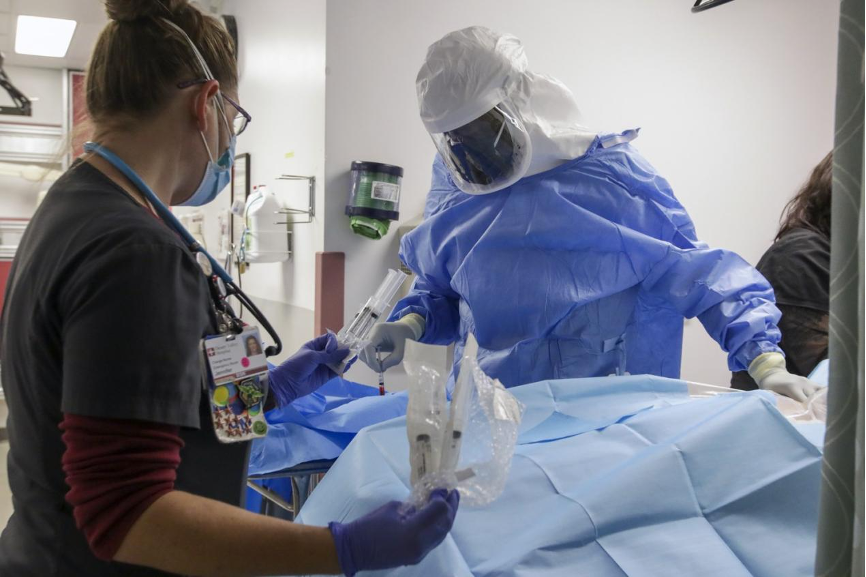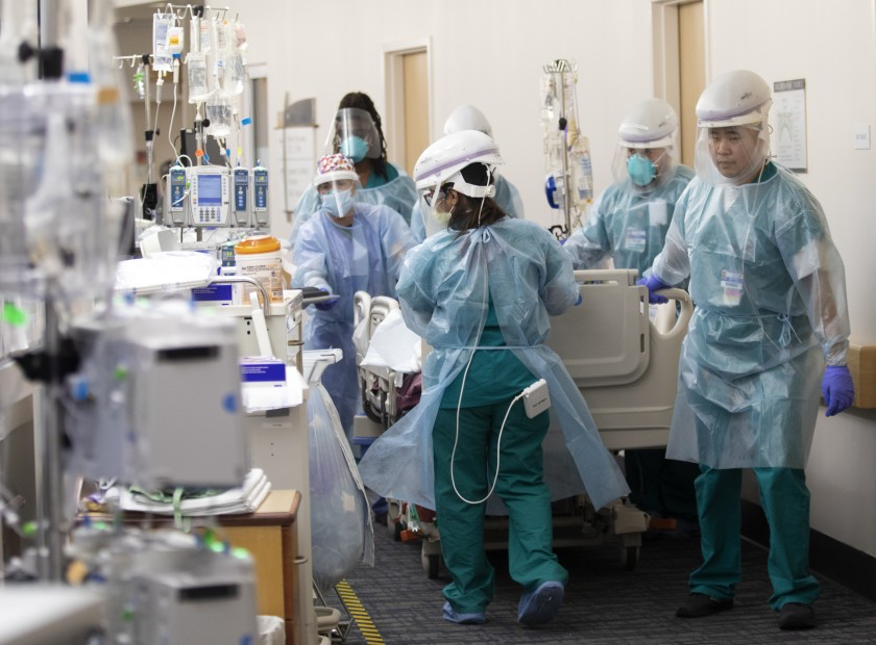December 28th, local time, the Los Angeles Times reported that there was no sign of easing the epidemic in the United States, and year-end holiday trips and social gatherings intensified the further spread of the novel coronavirus.
Recently, a surge of confirmed COVID-19 patients flooded into hospitals in California (California), and the number of beds in intensive care unit (ICU) has declined rapidly. Medical staff are facing the dilemma of insufficient protective equipment.
What’s wrong?
Since the beginning of November, the number of confirmed cases of COVID-19 in California has surged, attracting close attention from local officials. By the end of November, about 4,000 people in California were diagnosed with COVID-19 every day. California now has an average of more than 40,000 confirmed cases per day.

The Los Angeles Times reported that the low epidemic prevention standards in some key industries, the lack of economic relief for the poor, and the shortage of hospital ICU beds are the main factors contributing to the current surge in infections and deaths.
Take Los Angeles, for example, which has two of the largest ports in the United States and a large number of manufacturing plants. Workers in these industries have difficulty maintaining social distancing at work, and the low standards of related health and epidemic prevention have accelerated the spread of the virus.
The lack of strong economic relief in California’s poorest communities has led to the pandemic’s significant impact on California, says University of San Francisco epidemiologist Bibbins Domingo.
Public health experts also pointed out that California’s various epidemic prevention policies are confusing, and the anti-epidemic countermeasures vary greatly from state to state in the United States, making the epidemic in the United States gradually get out of control.
Fauci: There are two reasons why the epidemic in the United States is out of control.
On the 28th, Anthony Fauci, an infectious disease expert in the United States, said in an interview with the BBC that the lack of a unified epidemic response and standards in the United States, and the huge differences in state policies and lack of continuity have become the “main weakness” in the United States’ response to the epidemic. In addition, the politicization of public health issues in the United States is also an important reason for the out-of-control of the COVID-19 epidemic in the United States.
Fauci said, “Some simple protective measures, such as wearing masks, have become a political statement; avoiding gathering and staying away from gatherings have also become political statements. This has caused great trouble for the unpredictable epidemic prevention and control at present.
Earlier, Fauci also warned that the worst period of the epidemic in the United States may not have yet arrived. With the end of the year holiday, travel and gatherings will put more pressure on the U.S. health care system. Confirmed cases will continue to surge, and the epidemic situation in the United States will continue to worsen.
U.S. media: The United States may usher in a “nightmare” January
CNN said on the 28th that December was the “deadliest” month since the outbreak of the epidemic in the United States. Over 63,000 Americans have died from COVID-19 in the last 26 days, compared to 36,964 in November.
CNN reported that in early December, the United States approved two coronavirus vaccines, giving the public a glimmer of hope. However, some analysts say that after the end of the year holiday, the increasing number of confirmed cases and hospitalizations in the United States will inevitably lead to more deaths.
The Institute of Health Indicators and Assessments of the University of Washington predicts that 193 million more people may die of COVID-19 in the United States in the next two months. “These predictions are a nightmare, and people should keep social distancing and wear masks to protect themselves,” said Peter Hotez, an infectious disease expert at Baylor College of Medicine.



